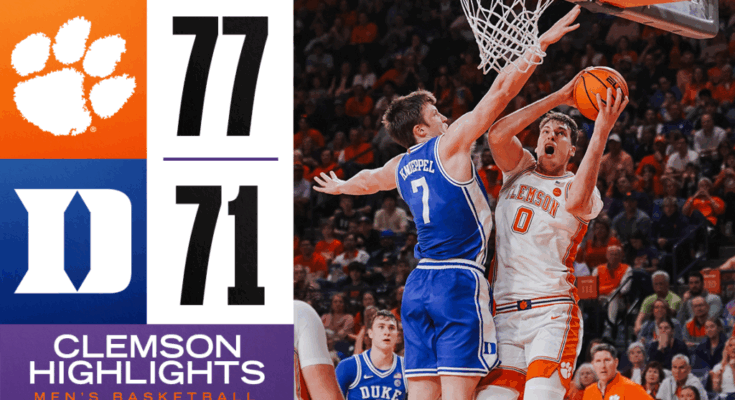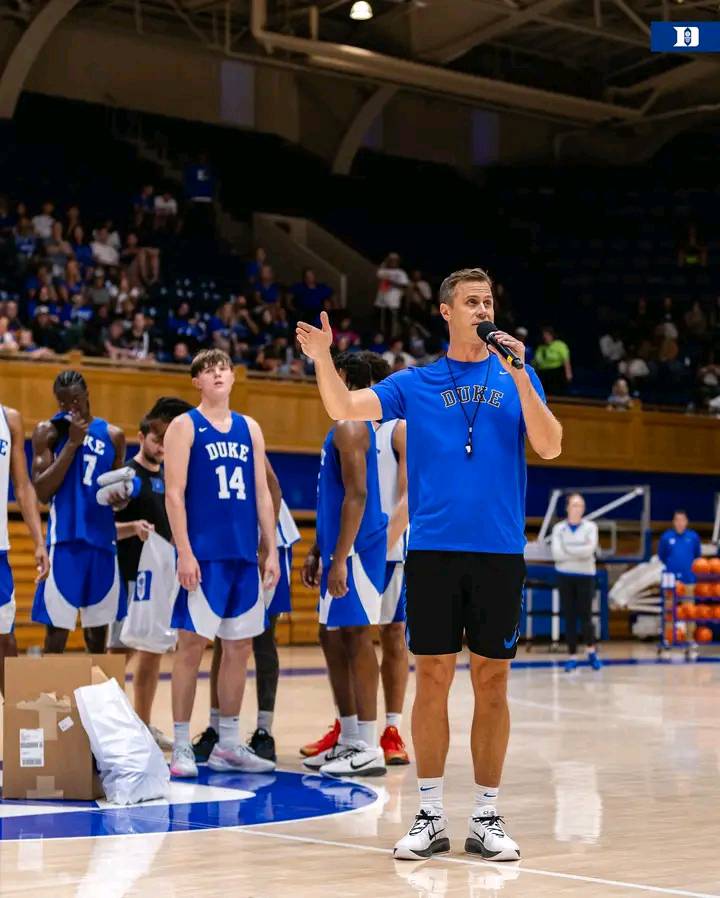Reliving a Classic: Clemson vs. Duke February 20, 1999 Clash Showcases Intensity, Star Power, and ACC Basketball at Its Peak in a Game That Still Resonates
The date was February 20, 1999. The setting was Cameron Indoor Stadium, one of the most iconic and hostile venues in college basketball. The matchup: Clemson versus Duke, an Atlantic Coast Conference showdown between two programs with vastly different historical trajectories but united in rivalry and pride. What unfolded that night was more than just a basketball game—it was a display of intensity, talent, drama, and the kind of physical, passionate play that defines ACC basketball at its best. The full game replay, recently resurfaced for fans and historians alike, brings back every pulse-pounding moment, reminding viewers of why this matchup still resonates over two decades later.
Duke entered the game in dominant fashion, ranked No. 1 in the country, riding a wave of momentum during what would become one of the program’s most impressive seasons under the legendary Mike Krzyzewski. The Blue Devils had assembled a roster brimming with talent, chemistry, and poise. Names like Elton Brand, Shane Battier, Trajan Langdon, and William Avery weren’t just known within the ACC—they were national stars, future NBA draft picks, and college basketball household names. With a lineup that could score from anywhere on the court and suffocate opponents on defense, Duke represented the gold standard in college basketball at the time.
Clemson, on the other hand, entered as the underdog. Though the Tigers weren’t favored to win, they arrived in Durham with grit and determination, well aware of the opportunity a victory over the top team in the nation would represent. Under head coach Larry Shyatt, Clemson was in the midst of rebuilding and rebranding its basketball identity, leaning on hard-nosed defense and opportunistic scoring. The Tigers knew that in the ACC, respect wasn’t given—it had to be earned on the hardwood.
From the opening tip, it was clear the game would not be a runaway win for Duke. Clemson played with intensity, challenging every pass, contesting every shot, and refusing to let the raucous Cameron crowd rattle them. Though Duke’s high-powered offense often overwhelmed opponents early, the Tigers managed to keep pace in the opening minutes. Vernon Hamilton and Chris Hobbs anchored Clemson’s effort, playing with toughness and showing no fear in the face of Duke’s deep and explosive roster.
Elton Brand, one of the most dominant big men in the nation, quickly made his presence felt. His ability to carve out space in the paint, finish through contact, and crash the boards gave Duke a critical advantage. Time and again, he fought through double teams to score or draw fouls, showcasing why he would go on to be the first overall pick in the 1999 NBA Draft. Yet, Clemson countered with resilience, making timely defensive stops and pushing the ball in transition to create offensive opportunities. Despite Duke’s clear talent advantage, Clemson refused to back down.
One of the most memorable elements of the game was the sheer physicality. Every possession felt like a battle. Players dove for loose balls, bodies collided in the lane, and coaches stalked the sidelines with urgency. Trajan Langdon’s silky jump shot and Shane Battier’s relentless hustle on both ends of the floor provided Duke with energy, but Clemson answered with smart rotations and a commitment to defense that kept them within striking distance for much of the contest.
Duke’s ability to go on scoring runs ultimately separated them, and by halftime, they had built a modest but dangerous lead. The second half saw Coach K’s team flex its depth and experience. William Avery took over stretches of the game with quick drives, slick passes, and clutch shooting. Langdon’s perimeter game was near automatic, and Duke began to pull away as fatigue set in for the Tigers.
But what made this game so compelling—and why the full replay still captivates audiences—is Clemson’s refusal to roll over. With just under ten minutes to play, Clemson clawed their way back into contention. A series of turnovers forced by Clemson’s defense led to fast-break points. Suddenly, what had looked like a game slipping away was now back within single digits. The energy on the Clemson bench surged, and the crowd, though largely pro-Duke, acknowledged the grit and determination on display from the Tigers.
In the final minutes, Duke’s poise under pressure proved decisive. Brand continued to dominate inside, drawing fouls and converting at the line. Langdon and Avery hit timely jumpers to extinguish Clemson’s final push. As the clock wound down, Duke secured the win, preserving their top ranking and undefeated conference record. Yet, the final score—while favoring Duke—didn’t tell the whole story. Clemson had pushed the nation’s best to the brink in one of college basketball’s most hostile environments.
The postgame reflections from both sides painted a picture of mutual respect. Coach Krzyzewski praised Clemson’s toughness and defensive game plan, acknowledging that his team had been tested more than the scoreboard might indicate. Coach Shyatt expressed pride in his team’s fight, noting that while the loss stung, the performance showed what Clemson basketball was capable of when it played with confidence and intensity.
For Duke, the win was another step on their march to the 1999 NCAA Championship Game. Though they would ultimately fall to UConn in one of the tournament’s greatest title games, the season stands as one of the most dominant in school history. The win over Clemson was emblematic of how Duke handled challenges—with focus, talent, and execution.
For Clemson, the game was a turning point in perception. While the Tigers didn’t leave Durham with a victory, they had proven they could go toe-to-toe with the best. The performance served as a blueprint for the program’s identity moving forward: defense-first, aggressive, and fearless. It was a reminder that Clemson could compete in the ACC, even in the most difficult environments and against the most elite opponents.
Rewatching the full replay today, the game holds up not just for its historical significance but for its intensity and quality of play. It was a game where every possession mattered, where coaching decisions were magnified, and where individual matchups became chess matches within the game. Watching players like Elton Brand and Shane Battier in their collegiate prime, competing against a scrappy Clemson squad that played with heart and hustle, offers a vivid reminder of what makes college basketball so uniquely compelling.
Moreover, the broadcast, camera work, and commentary of the era offer a nostalgic glimpse into the late 1990s college basketball landscape. The game featured fewer threes and more emphasis on physical play, half-court execution, and inside-out offense. It was a brand of basketball that demanded toughness, skill, and discipline—qualities both teams displayed in abundance that night.
Today, when fans look back at Duke’s legendary 1999 season or discuss the evolution of Clemson’s basketball program, this game remains a pivotal reference point. It wasn’t a championship game or a last-second buzzer-beater classic, but it was something perhaps even more enduring—a snapshot of what high-level college basketball looks like when pride, preparation, and passion meet under the brightest of lights.
The Clemson vs. Duke matchup from February 20, 1999, stands not just as a memory but as a standard. It’s a reminder of why we love the game—of how the underdog can rise, how stars can shine, and how a single night in February can still be talked about decades later. It is a testament to the power of competition and the enduring legacy of ACC basketball. As fans continue to rediscover this game through full replays, its lessons, drama, and brilliance remain just as powerful as they were the night it was played.



